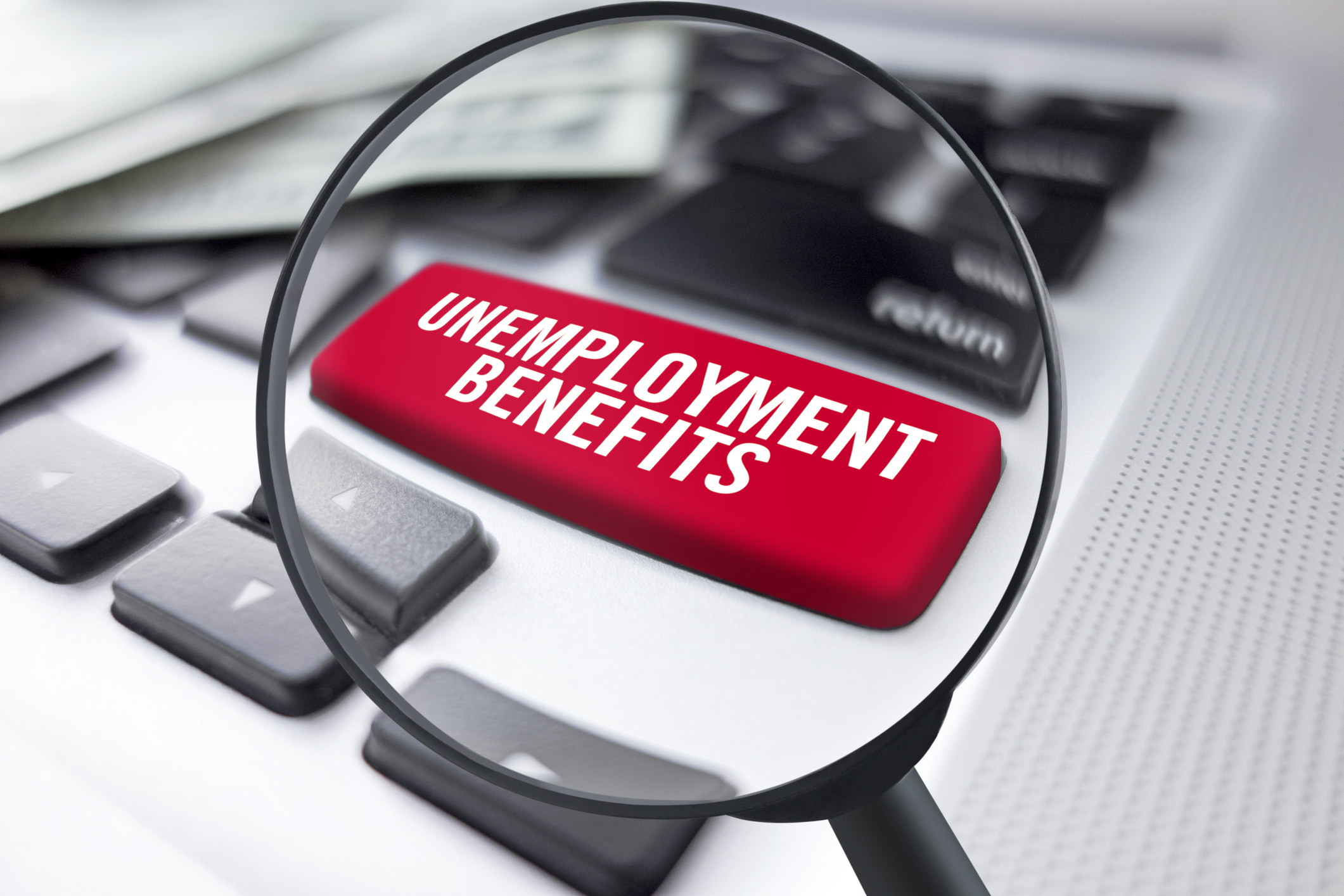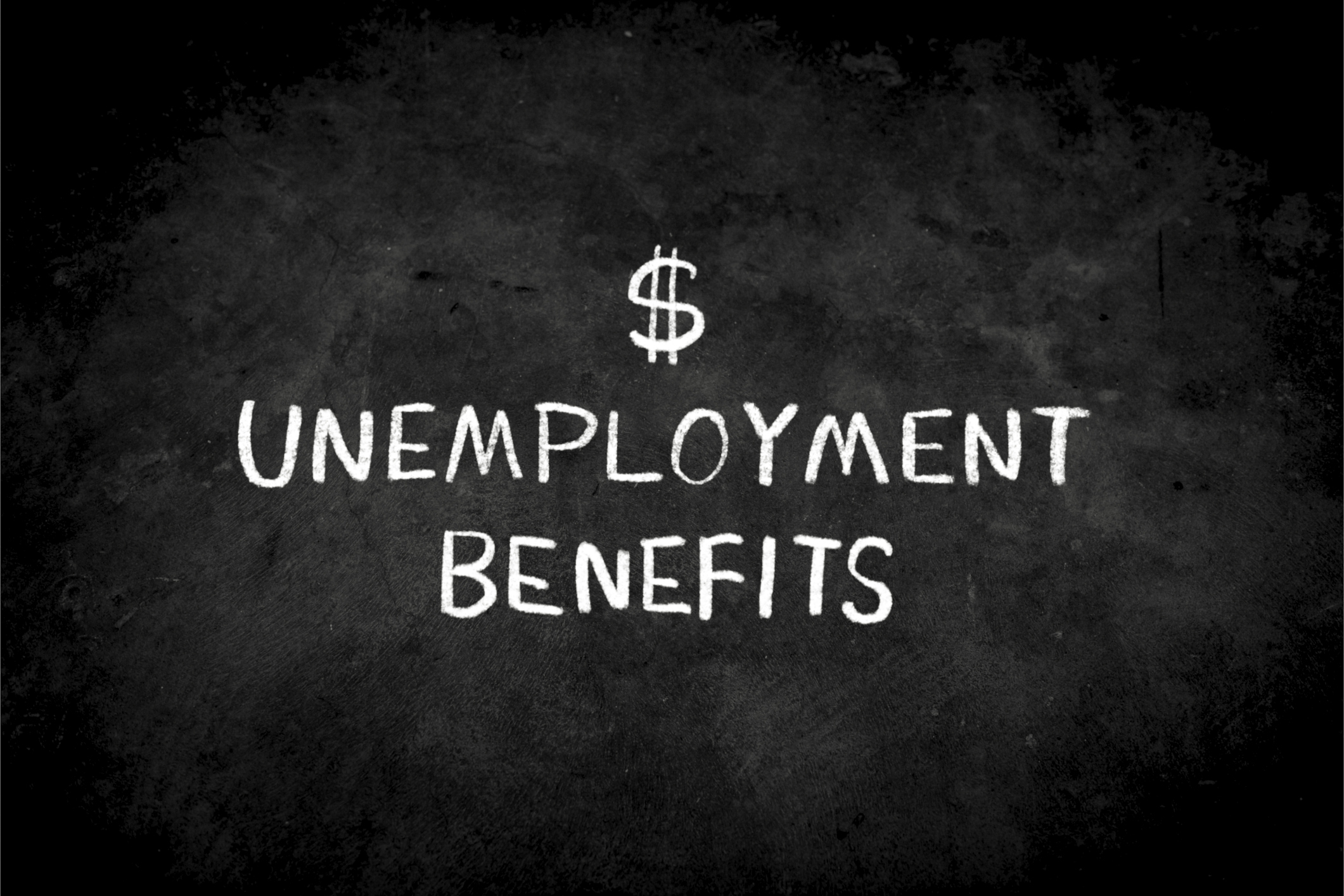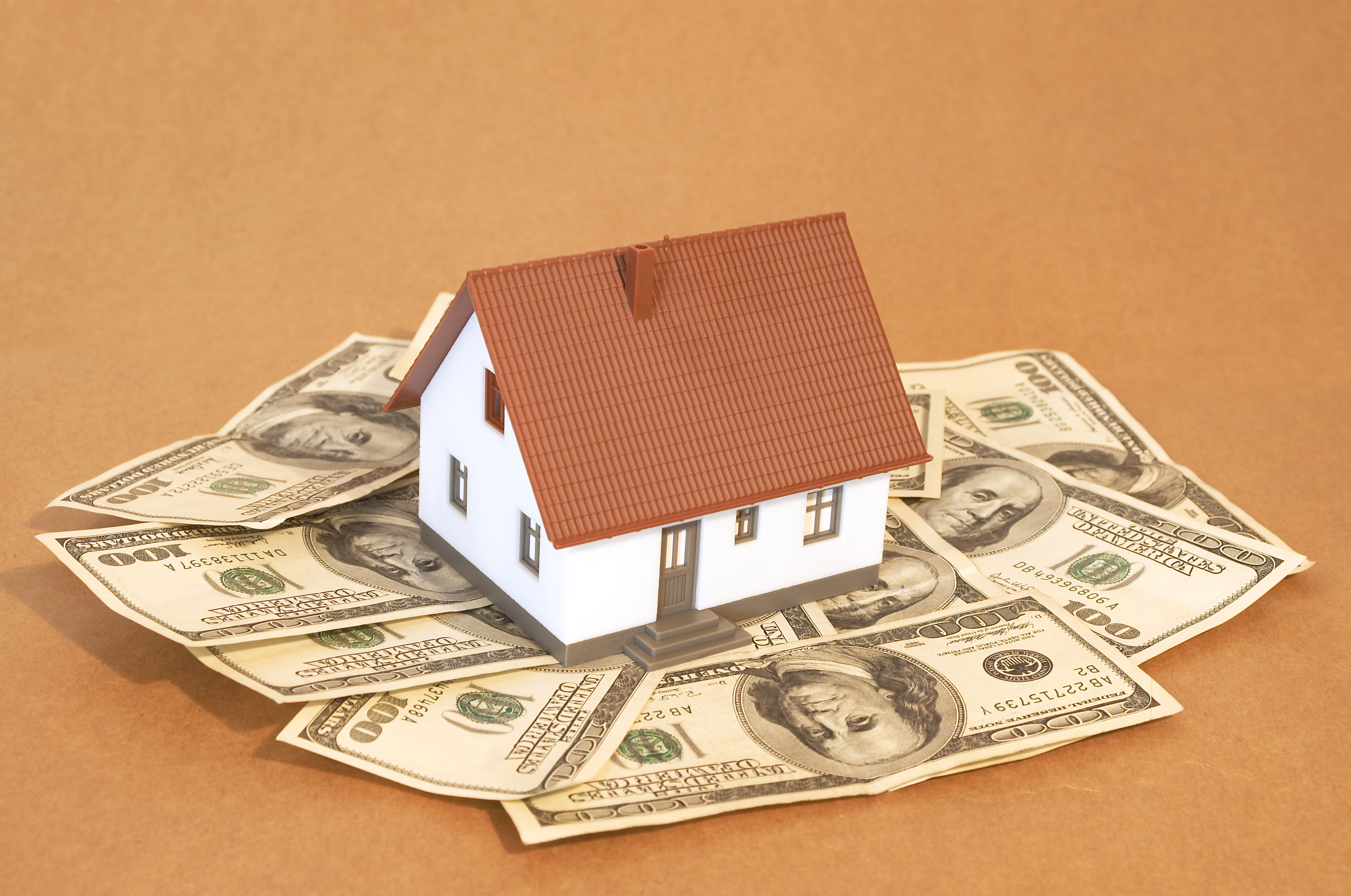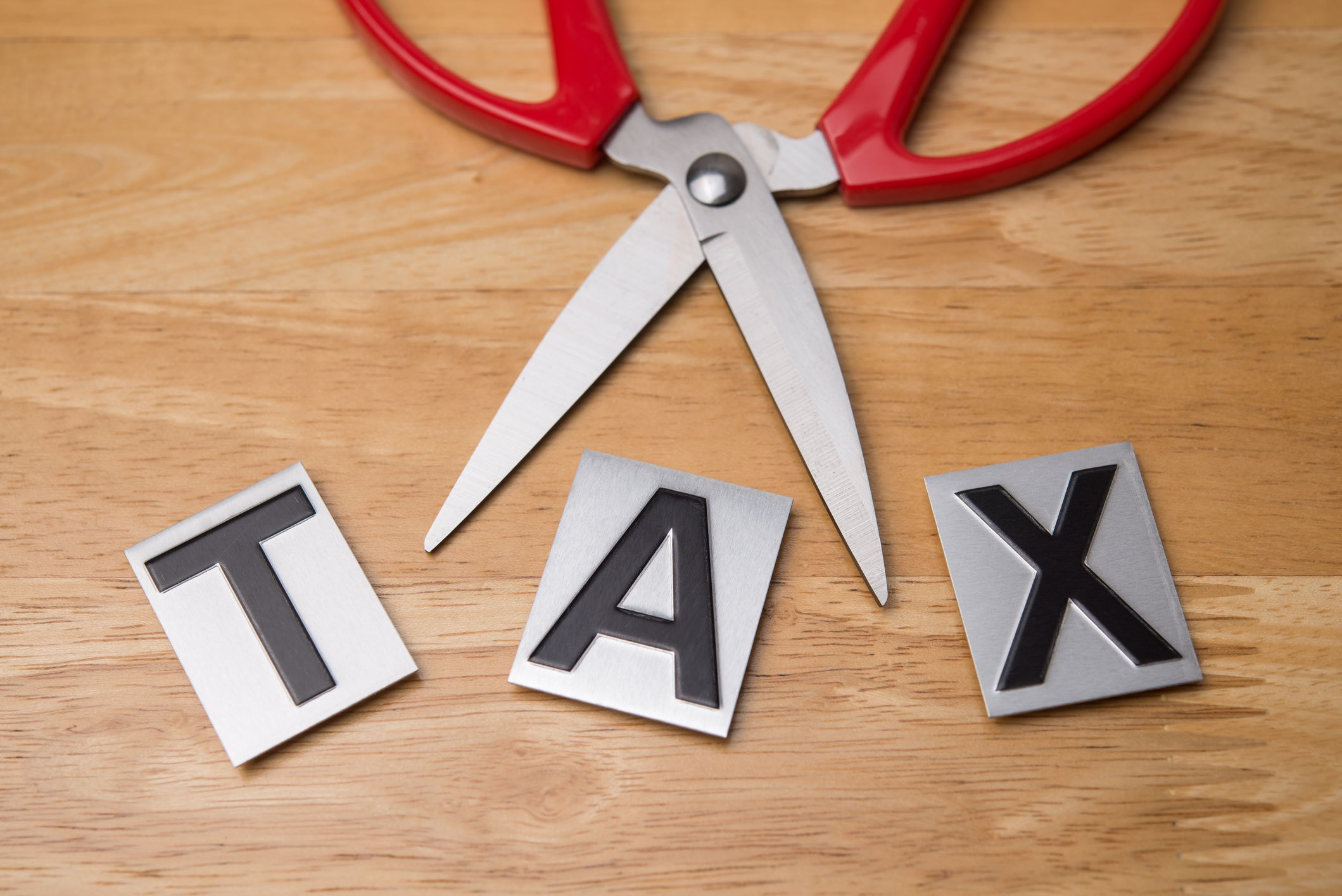Is Unemployment Taxable? A State-by-State Guide
The federal government taxes unemployment benefits. But is unemployment taxable in your state?


- Arizona
- Arkansas
- Colorado
- Delaware
- Georgia
- Hawaii
- Idaho
- Illinois
- Indiana
- Iowa
- Kansas
- Kentucky
- Louisiana
- Maine
- Maryland
- Massachusetts
- Michigan
- Minnesota
- Mississippi
- Missouri
- Nebraska
- New Mexico
- New York
- North Carolina
- North Dakota
- Ohio
- Oklahoma
- Oregon
- Rhode Island
- South Carolina
- Utah
- Vermont
- West Virginia
- Wisconsin
If you’re waiting for an unemployment check, you’ll have to deduct federal income tax on your benefits. Not to mention, your compensation may face some extra taxes.
That’s because some states consider unemployment benefits taxable income, while others don’t. So, how much taxes you face will largely depend on where you live.
As of 2025, only 14 states plus the District of Columbia don’t impose state income taxes on unemployment (though they’ll levy UI taxes). While some states featured on our list levy a flat tax rate, others vary depending on your income threshold. Some of the highest tax rates on our list climb up to 11%.
From just $107.88 $24.99 for Kiplinger Personal Finance
Become a smarter, better informed investor. Subscribe from just $107.88 $24.99, plus get up to 4 Special Issues

Sign up for Kiplinger’s Free Newsletters
Profit and prosper with the best of expert advice on investing, taxes, retirement, personal finance and more - straight to your e-mail.
Profit and prosper with the best of expert advice - straight to your e-mail.
Here’s what you should know about how states will tax your unemployment in 2025.
States that don’t tax unemployment
Which states don’t tax unemployment benefits? Unemployment benefits are taxable to some degree in most states. Additionally, all 50 states and the District of Columbia levy UI taxes. But you won’t have to pay state income tax on these benefits if you live in one of the states listed below.
The following states (and the District of Columbia) either don’t tax personal income or exempt unemployment income from tax:
Alabama, Alaska, California, District of Columbia, Florida, Montana
Nevada, New Hampshire, New Jersey, Pennsylvania, South Dakota
Tennessee, Texas, Virginia, Washington, and Wyoming
Where is unemployment taxable?
Before turning to states that tax unemployment benefits, it’s important to know that unemployment benefits are taxable at the federal level. The IRS considers unemployment benefits taxable income, and you must claim the benefits as such when you file your federal income tax return.
Note: You can opt to have a portion of federal taxes withheld from your state unemployment benefit payments. However, you request this since withholding is not automatic for unemployment benefits. You will receive a Form 1099-G containing information showing the total amount of your benefit payments and withholding for a given year.

If you collect unemployment in any other state, you may find yourself with a bigger-than-expected tax bill when you file your state return. Here’s how the states that do tax unemployment will tax your benefits for the 2025 and 2026 tax years.
Arizona taxes on unemployment
Arizona taxes unemployment benefits at the same rate as regular income is taxed.
However, there’s a good chance you’ll pay less income tax in Arizona since the state now imposes a flat 2.5% tax rate, regardless of how much you earn (or collect in unemployment).
The tax rate could drop to 2.42% in 2026 (returns you'll file in 2027) if certain conditions relating to budget surpluses are met.
Arkansas state unemployment tax
Arkansas considers your unemployment benefits taxable income, but the state doesn’t have a flat income tax rate like Arizona does. That means how much tax you pay depends on which tax bracket you fall into.
The Arkansas Division of Workforce Services (DWS) also offers claimants the option of deducting 10% of their weekly benefit to pay your federal income tax.
- The tax rate is 2% for taxable income up to $4,500.
- Amounts greater than $4,500 is taxed at 3.9%.
For 2026 ( taxes you'll file in 2027), Arkansas switches to an income tax system with the following rates:
- Income from $5,500 to $10,899 is taxed at 2%
- Income from $10,900 to $15,559 is taxed at 3%
- Income from $15,600 to $25,699 is taxed at 3.4%
- Income over $25,700 is taxed at 3.9%
Colorado taxes on unemployment
Colorado will tax your unemployment as regular income, but there’s no need to worry about which tax bracket you fall into. You’ll pay a flat 4.4% Colorado state income tax rate in 2025 and for the 2026 tax year, regardless of your income level.
Delaware unemployment tax
Delaware will tax your unemployment benefits, but how much will you pay? That depends on your yearly income. You’re subject to a Delaware income tax rate of at least 2.20% if your taxable income is less than $2,000. But you could owe the state more.
- If your taxable income is between $5,000 and $25,000, you could pay a tax rate up to 5.55%.
- Delaware taxes income greater than $60,000 at a 6.6% rate.
For 2026 (returns you'll file in 2027), Delaware made changes to the tax brackets and rates:
- Income from $2,001 to $5,000 is taxed at 2%
- Income from $5,001 to $20,000 is taxed at 4%
- Income from $20,001 to $60,000 is taxed at 5.5%
- Income from $60,001 to $125,000 is taxed at 6.6%
- Income from $125,001 to $250,000 is taxed at 6.75%
- Income over $250,001 is taxed at 6.9%
Georgia unemployment tax
Unemployment benefits are taxable in Georgia, and most filers will pay a flat 5.19% state income tax rate for tax year 2025.
- For 2026 (tax returns typically filed in 2027), the tax rate drops to 5.09%.
- Georgia may reduce the tax rate to 4.99% by 2028, but only if specified targets are met.
Hawaii unemployment tax
You can’t escape state taxes in Hawaii. The state taxes unemployment benefits to the same extent as the federal government. There are 12 income tax brackets in Hawaii. The lowest bracket comes with a 1.4% tax rate, but most Hawaii residents will pay more.
- Income tax rates in Hawaii range from 6.8% to 8.5% for single filers with income between $24,000 and $175,000.
- If your taxable income exceeds $325,000 ($650,000 for joint filers), you’re subject to an 11% tax rate.
Idaho income tax
Idaho is another state that taxes unemployment benefits, and you’ll pay the same tax rate, regardless of your income. Idaho levies a flat income tax rate of 5.695% for all taxable income over $4,673 ($9,356 for joint filers).
That’s good news if you’re a high earner, but the flat tax rate means people with lower incomes may pay more than they would in other states.
For 2026 (returns typically filed in 2027), the tax rate will drop to 5.3%.
Illinois unemployment tax
Unemployment benefits are taxed in Illinois, and the state has a flat tax rate.
However, taxpayers in Illinois pay nearly 1% less than taxpayers in Idaho. Illinois’ flat tax rate of 4.95% reduces the tax burden for higher-income taxpayers, but lower-income taxpayers may pay more in Illinois than in other states.
The tax rate will remain unchanged for tax year 2026 (which you'll file in 2027).
Indiana unemployment taxes
Indiana taxes unemployment benefits, but residents are luckier than some. Indiana imposes a flat tax rate of 3%, which is much lower than in many states. That rate is also lower than Indiana's tax rate last year.
For 2026, this rate drops to 2.95%.
Indiana residents may be able to deduct a portion of unemployment benefits from their taxable income.
Iowa taxes on unemployment income
Unemployment income is fully taxable in Iowa, so be prepared for a possible tax bill when you file your state tax return. Iowa has a flat income tax rate of 3.8%.
For tax year 2026, that rate won't change.
Is unemployment taxable in Kansas?
Unemployment benefits are subject to Kansas state income tax, but how much will you pay? That depends on how much money you make in 2025. However, tax brackets in the state max out at 5.58%, which is low compared to many states.
- Income up to $23,000 ($46,000 for married filing jointly) is subject to a 5.2% tax rate
- Income over $23,000 ($46,000 for married filing jointly) is subject to a 5.58% tax rate
For tax year 2026 (which you'll file in 2027), the tax rates won't change.
Kentucky tax on unemployment benefits
Kentucky taxes unemployment benefits to the same extent as federal law, but you won’t have to guess your state tax rate. That’s because Kentucky imposes a flat income tax rate of 4% for 2025.
For 2026 (which you'll file in 2027), the rate drops to 3.5%.
Louisiana tax on unemployment
In Louisiana, you’ll pay a flat rate of 3% on your unemployment benefits. That’s because the Pelican State taxes unemployment to the same extent as the federal government.
For 2026, the tax rate is unchanged.
Maine unemployment tax
Maine taxes unemployment benefits, and income tax rates are higher for many filers in Maine than in other states. That’s because the lowest tax bracket in Maine is 5.8%. That’s higher than the highest tax rate in some states.
- The tax rate jumps to 6.75% for income over $27,400 (over $54,850 for joint filers).
- The highest tax rate is 7.15% in Maine and applies to income over $63,450 (over $126,900 for joint filers).
The tax rate is unchanged for 2026 (returns typially filed in 2027).
Is unemployment income taxed in Maryland?
The good news is Maryland’s income tax rates max out at 5.75%. The bad news is the state taxes income under just $1,000 at 2%, including unemployment benefits. How much Maryland income tax will you pay?
- Even taxpayers with income up to $3,000 are subject to a 4% tax rate.
- Taxpayers with income up to $100,000 ($150,000 for joint filers) fall into the 4.75% tax bracket.
- If your income exceeds $250,000 ($300,000 for joint filers) your tax rate is 5.75%.
For 2026, the 2025 tax rates will remain unchanged, but the state has added two new top-tier brackets:
- Income between $500,001 and $1 million is subject to a 6.5% tax rate
- Income over $1 million is subject to a 6.95% tax rate
Massachusetts taxes on unemployment
Massachusetts taxes unemployment benefits, but the state will tax you a flat 5% income tax rate unless you made over $1 million in 2025. In that case, you must pay the Massachusetts millionaire’s tax.
- The millionaire tax in Massachusetts is an additional 4% on income over $1 million. That equals a tax rate of 9%.
- Revenue from the tax helps to fund school lunches for Massachusetts students.
For 2026, the tax rate will remain unchanged.
Michigan taxes on unemployment
Unemployment income is taxable in Michigan, but figuring out how much state tax you owe is easier in Michigan than it is in most other states. That’s because the Wolverine State imposes a flat income tax rate.
- For 2025, Michigan’s flat income tax rate is 4.25%.
- Keep in mind that municipalities in Michigan may tax other income, such as wages.
For 2026, the tax rate will remain unchanged.
Tax rate for unemployment in Minnesota
Minnesota taxes unemployment benefits, and to make matters worse, the state imposes higher income tax rates than most. The lowest state tax rate is 5.35% and applies to income up to $32,570 ($47,620 for joint filers). If your income is higher, you will pay even more.
- If your income falls between $32,570 and $106,990 ($47,620 to $189,180 for joint filers), your Minnesota income tax rate is 6.8%.
- The state tax rate climbs to 7.85% for incomes between $106,990 to $198,630 ($189,180 to $330,410 for joint filers).
- Your income tax rate in Minnesota is 9.85% if your taxable income is higher than the amounts listed above.
For 2026, the rates remain unchanged.
Mississippi state unemployment tax
Mississippi taxes your unemployment benefits at a flat 4.4% income tax rate.
For 2026 (returns typically filed in 2027), you'll pay 4%.
Missouri unemployment tax
In Missouri, your unemployment benefits are considered taxable income. However, many state residents will pay less income tax this year. That’s because Missouri’s top tax bracket was recently reduced from 4.8% to 4.7% in 2025.
- Missouri residents with taxable income above $9,191 are subject to the 4.7% tax rate.
- However, the first $1,273 of income is tax-exempt.
For 2026, Missouri is transitioning to a flat income tax rate of 4.7%.
Nebraska state unemployment tax
Nebraska is another state that taxes unemployment benefits, and many taxpayers fall into the state’s top income tax bracket. That’s because the highest bracket applies to taxable income over $29,000 (more than $58,000 for joint filers). The rate for the top tax bracket is set to gradually reduce over the next few years though. Here’s what Nebraskans who fall into this bracket will pay in the coming years.
- 5.2% in 2025
- 4.55% in 2026
- 3.99% in 2027
New Mexico unemployment tax rate
New Mexico income taxes on unemployment benefits range from 1.5% to 5.9%. Single filers making up to $33,500 are subject to a tax rate of 4.7%. Joint filers can make up to $50,000 without surpassing the 4.7% rate. Higher earners pay even more taxes in New Mexico.
- New Mexico’s income tax rate is 4.9% for incomes between $66,500 to $210,000 ($100,00 to 315,000 for joint filers).
- All New Mexicans with taxable incomes higher than the amounts above are subject to the state’s highest tax rate of 5.9%.
There’s some good news. Starting 2025, all New Mexico taxpayers will benefit from the first major adjustment to the state income tax structure since 2005.
The new structure adds a sixth bracket with a 4.3% rate, and lowers the starting tax rate to 1.5%. The new brackets for 2025 are as follows:
Tax Rate | Income | Fixed Tax |
1.5% (lowered) | Under $5,500 | $0 |
3.2% | $6,500 - $16,500 | $82.50 |
4.3% (new) | Over $16,500 - $33,500 | $434.50 |
4.7% | Over $33,500 - $66,500 | $1,165.50 |
4.9% | Over $66,500 -$210,000 | $2,716.50 |
5.9% | Over $210,000 | $9,748.00 |
For 2026, the tax rates remain unchanged.
New York state unemployment tax
You can’t escape paying income tax on unemployment benefits in New York. The Empire State considers your unemployment payments taxable income, and the state has nine income brackets. That means how much state taxes you pay can vary greatly, depending on your annual taxable income.
- Income tax rates start at 4% in New York and apply to taxable income up to $8,500 ($17,150 for joint filers).
- However, the highest tax rate of 10.9% only applies if your income exceeds $25,000,000, so most New Yorkers pay a tax rate somewhere between the two.
For 2026, the tax rates on the five lowest brackets will decrease by 0.01%.
North Carolina unemployment tax
There’s some good news and some bad news when it comes to North Carolina unemployment tax. The state currently taxes these benefits at a flat tax rate of 4.25%. That is high for taxpayers with lower incomes but low for the highest-earning residents (compared to other states).
- North Carolina’s flat income tax rate is set to gradually reduce over the next three years.
- For 2026, the flat tax rate will be 3.99%.
North Dakota unemployment tax
North Dakota taxes unemployment benefits, but exempts income up to $48,425 from tax.
- Taxpayers with higher incomes only pay an income tax rate of 1.95% or 2.5%. That’s much lower than most other states in the country.
The tax rates will remain unchanged for 2026.
Ohio unemployment tax rate
Ohio considers unemployment benefits taxable income, but the state imposes lower tax rates than many other states. For example, top earners in Ohio pay a 3.125% state income tax rate.
- Taxpayers with incomes up to $26,050 have a 0% tax rate.
- Taxpayers with incomes from $26,050 to $100,000 have a tax rate of 2.750%.
- Taxpayers with incomes over $100,000 have a 3.125% tax rate.
For 2026, Ohio will impose a flat tax rate of 2.75% on taxable income above $26,050.
Are Oklahoma unemployment benefits taxed?
Oklahoma taxes unemployment benefits, and most residents will pay the top income tax rate of 4.75%. That’s because this tax rate applies to taxable income over $7,200 ($14,400 for joint filers). If your taxable income is below this amount, here’s you much Oklahoma income tax you might pay.
- 0.25% on up to $1,000 ($2,000 for joint filers)
- 0.75% on income from $1,000 to $2,500 ($2,000 to $5,000 for joint filers)
- 1.75% on income from $2,500 to $3,750 ($5,000 to $7,500 for joint filers)
- 2.75% on income from $3,750 to $4,900 ($7,500 to $9,800 for joint filers)
Oregon unemployment tax
Oregon taxes unemployment benefits. And to make matters worse, the state has higher income tax rates than most. Depending on your annual taxable income, you can expect to pay an Oregon tax rate between 4.75% and 9.9%.
- Oregon residents with income up to $4,400 will pay the low 4.75% tax rate.
- The highest income tax rate of 9.9% applies to taxable income over $125,000.
For 2026, the tax rates don't change.
Rhode Island unemployment taxes
Unemployment benefits are considered taxable income in Rhode Island, and you may wind up paying a 3.75% state income tax rate, even if you made very little. The lowest tax bracket of 3.75% applies to taxable income below $79,900.
- You could pay a 4.75% tax rate if your taxable income is over $79,900 but not over $181,650.
- The Rhode Island income tax rate for taxable income over $181,650 is 5.99%.
For 2026, Rhode Island added a 3% surtax on taxable income exceeding $625,000, bringing the total rate to 8.99%.
South Carolina unemployment tax
South Carolina taxes unemployment income, and most state residents are subject to the highest income tax bracket of 6.2%. That’s because this tax rate applies to taxable income over $17,830. Here’s how much you might pay in South Carolina income tax if your income falls below this threshold:
- Income up to $3,560 is tax-exempt.
- South Carolina’s income tax rate is 3% for taxable income over $3,560 to a limit of $17,830.
For 2026, South Carolina is implementing a two-tier system:
- Taxable income up to $30,000 is subject to a 1.99% tax rate
- Taxable income over $30,000 is subject to a 5.39% tax rate
Utah unemployment tax
If you collect unemployment benefits in Utah this year, you’ll pay state income tax on the payments you receive. However, you won’t have to figure out which tax bracket you fall into. Utah has a flat income tax bracket of 4.55%.
Vermont state unemployment tax
Vermont taxes unemployment as taxable income, but it’s possible to escape Vermont’s state income tax if your income falls below specified thresholds set by the state. For 2025, incomes up to $47,900 will have a 3.35% tax rate. Here’s how much you’ll pay if you make more money this year.
- 6.6% on taxable income from above $47,900.
- 7.6% on taxable income above $116,000, but not over $242,000.
- Filers will pay the highest Vermont income tax rate of 8.75% if they make more than the amounts listed above.
For 2026 the tax rates don't change.
Unemployment tax in West Virginia
West Virginia taxes unemployment income to the same extent it’s taxed by federal law. However, West Virginia income tax rates max out at 4.82%, which is lower than the highest tax brackets in many states. The 4.82% tax bracket applies to taxable income over $60,000.
- The lowest West Virginia tax rate of 2.22% applies to income up to $10,000.
- Taxpayers with incomes that fall over $10,000 and $40,000 pay a tax rate between 2.96% and 4.44%.
- Those with incomes above $60,000 will have a tax rate of 4.82%.
For 2026, the rates are unchanged.
Is unemployment taxable in Wisconsin?
Unemployment is taxable in Wisconsin. However, some residents can exclude a portion of their payments from taxable income for state tax purposes. To find out if you can exclude any of your unemployment benefits, complete Wisconsin Schedule SB. Wisconsin has four income tax brackets.
- 3.50% on up to $14,680 (up to $19,580 for joint filers)
- 4.40% incomes over $14,680 but not over $29,370 ( over $19,580 but not over $39,150 for joint filers)
- 5.30% for taxable income over $29,370 to $323,290 (over 39,150 but not over $431,060 for joint filers)
- 7.65% for income amounts above the thresholds listed above
For 2026, the state will switch to a flat tax system with a rate of 3.25%.
Related
Profit and prosper with the best of Kiplinger's advice on investing, taxes, retirement, personal finance and much more. Delivered daily. Enter your email in the box and click Sign Me Up.

Katelyn has more than 6 years of experience working in tax and finance. While she specialized in tax content while working at Kiplinger from 2023 to 2024, Katelyn has also written for digital publications on topics including insurance, retirement, and financial planning and had financial advice commissioned by national print publications. She believes knowledge is the key to success and enjoys providing content that educates and informs.
- Roxanne BlandTax Writer
- Gabriella Cruz-MartínezTax Writer
-
 How to Avoid the Financial Quicksand of Early Retirement Losses
How to Avoid the Financial Quicksand of Early Retirement LossesSequence of returns — experiencing losses early on — can quickly deplete your savings, highlighting the need for strategies that prioritize income stability.
-
 How an Elder Law Attorney Can Help Protect Your Aging Parents
How an Elder Law Attorney Can Help Protect Your Aging ParentsIf you are worried about older family members or friends whose financial judgment is raising red flags, help is out there — from an elder law attorney.
-
 Q4 Post-Mortem From an Investment Adviser: Year of Resilience
Q4 Post-Mortem From an Investment Adviser: Year of ResilienceFinancial pro Prem Patel shares his take on how markets performed in the fourth quarter of 2025, with an eye toward what investors should keep in mind for 2026.
-
 10 Cheapest Places to Live in Washington
10 Cheapest Places to Live in WashingtonProperty Tax Is Washington your go-to ski destination? These counties combine no income tax with the lowest property tax bills in the state.
-
 3 Major Changes to the Charitable Deduction for 2026
3 Major Changes to the Charitable Deduction for 2026Tax Breaks About 144 million Americans might qualify for the 2026 universal charity deduction, while high earners face new IRS limits. Here's what to know.
-
 Retirees in These 7 States Could Pay Less Property Taxes Next Year
Retirees in These 7 States Could Pay Less Property Taxes Next YearState Taxes Retirement property tax bills could be up to 65% cheaper for some older adults in 2026. Do you qualify?
-
 Estate Tax Quiz: Can You Pass the Test on the 40% Federal Rate?
Estate Tax Quiz: Can You Pass the Test on the 40% Federal Rate?Quiz How well do you know the new 2026 IRS rules for wealth transfer and the specific tax brackets that affect your heirs? Let's find out!
-
 Mamdani's Millionaire's Tax: Let the New York Exodus Begin?
Mamdani's Millionaire's Tax: Let the New York Exodus Begin?State Tax Will higher income taxes drive the wealthy to flee New York in 2026?
-
 Law Reversal Looming? Trump Eyes 2026 Gambling Winnings Tax Change
Law Reversal Looming? Trump Eyes 2026 Gambling Winnings Tax ChangeTax Deductions It's no secret that the IRS is coming after your gambling winnings in 2026. But how long will that last?
-
 Trump's Plan to Eliminate Income Tax: 7 Things to Know Now
Trump's Plan to Eliminate Income Tax: 7 Things to Know NowTax Policy The potential consequences of eliminating taxes in favor of Trump tariffs could impact everything from inflation to Social Security and might give some U.S. taxpayers pause.
-
 5 Types of Gifts the IRS Won’t Tax: Even If They’re Big
5 Types of Gifts the IRS Won’t Tax: Even If They’re BigGift Tax Several categories of gifts don’t count toward annual gift tax limits. Here's what you need to know.